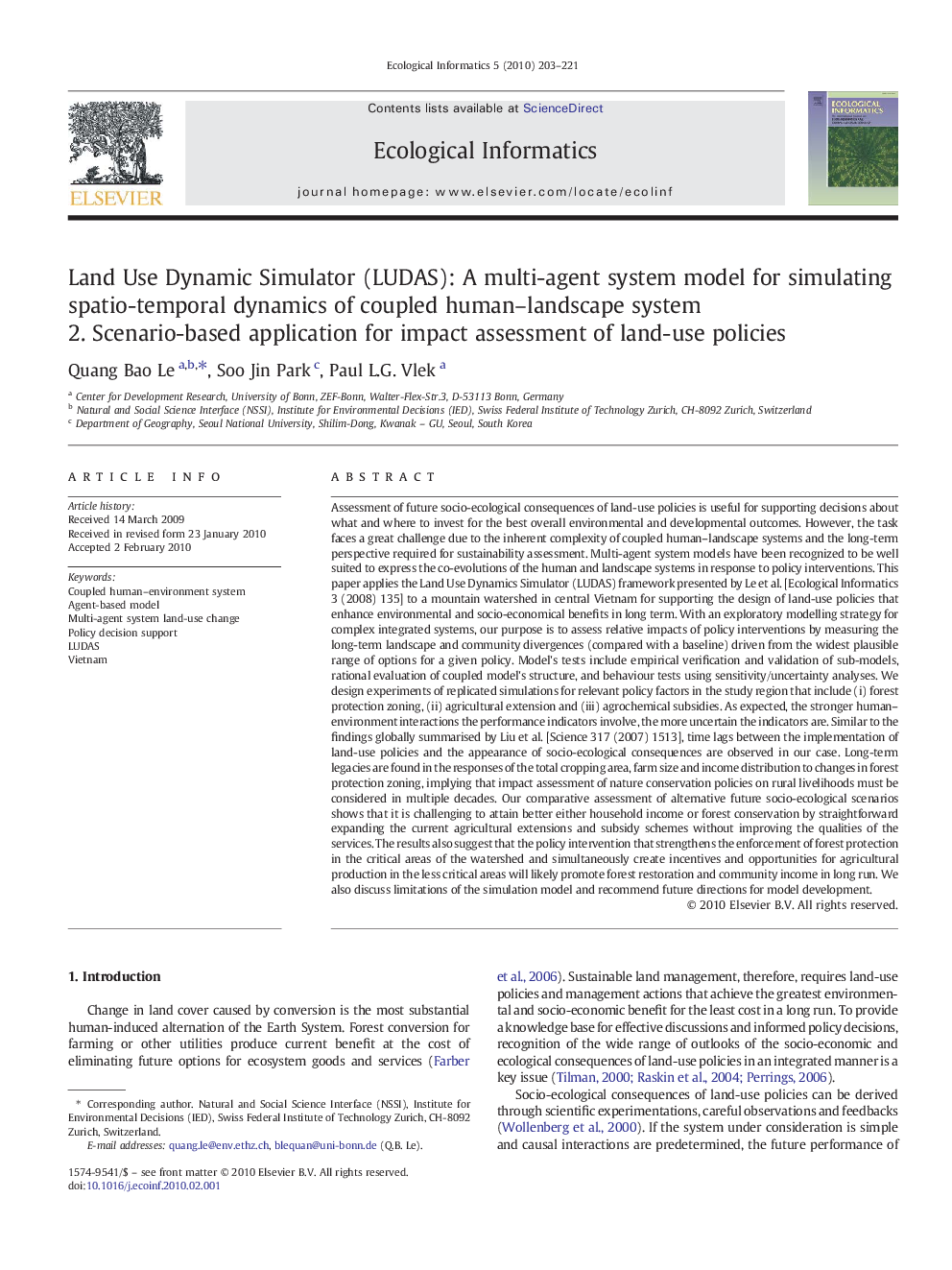| کد مقاله | کد نشریه | سال انتشار | مقاله انگلیسی | نسخه تمام متن |
|---|---|---|---|---|
| 4375208 | 1303250 | 2010 | 19 صفحه PDF | دانلود رایگان |

Assessment of future socio-ecological consequences of land-use policies is useful for supporting decisions about what and where to invest for the best overall environmental and developmental outcomes. However, the task faces a great challenge due to the inherent complexity of coupled human–landscape systems and the long-term perspective required for sustainability assessment. Multi-agent system models have been recognized to be well suited to express the co-evolutions of the human and landscape systems in response to policy interventions. This paper applies the Land Use Dynamics Simulator (LUDAS) framework presented by Le et al. [Ecological Informatics 3 (2008) 135] to a mountain watershed in central Vietnam for supporting the design of land-use policies that enhance environmental and socio-economical benefits in long term. With an exploratory modelling strategy for complex integrated systems, our purpose is to assess relative impacts of policy interventions by measuring the long-term landscape and community divergences (compared with a baseline) driven from the widest plausible range of options for a given policy. Model's tests include empirical verification and validation of sub-models, rational evaluation of coupled model's structure, and behaviour tests using sensitivity/uncertainty analyses. We design experiments of replicated simulations for relevant policy factors in the study region that include (i) forest protection zoning, (ii) agricultural extension and (iii) agrochemical subsidies. As expected, the stronger human–environment interactions the performance indicators involve, the more uncertain the indicators are. Similar to the findings globally summarised by Liu et al. [Science 317 (2007) 1513], time lags between the implementation of land-use policies and the appearance of socio-ecological consequences are observed in our case. Long-term legacies are found in the responses of the total cropping area, farm size and income distribution to changes in forest protection zoning, implying that impact assessment of nature conservation policies on rural livelihoods must be considered in multiple decades. Our comparative assessment of alternative future socio-ecological scenarios shows that it is challenging to attain better either household income or forest conservation by straightforward expanding the current agricultural extensions and subsidy schemes without improving the qualities of the services. The results also suggest that the policy intervention that strengthens the enforcement of forest protection in the critical areas of the watershed and simultaneously create incentives and opportunities for agricultural production in the less critical areas will likely promote forest restoration and community income in long run. We also discuss limitations of the simulation model and recommend future directions for model development.
Journal: Ecological Informatics - Volume 5, Issue 3, May 2010, Pages 203–221